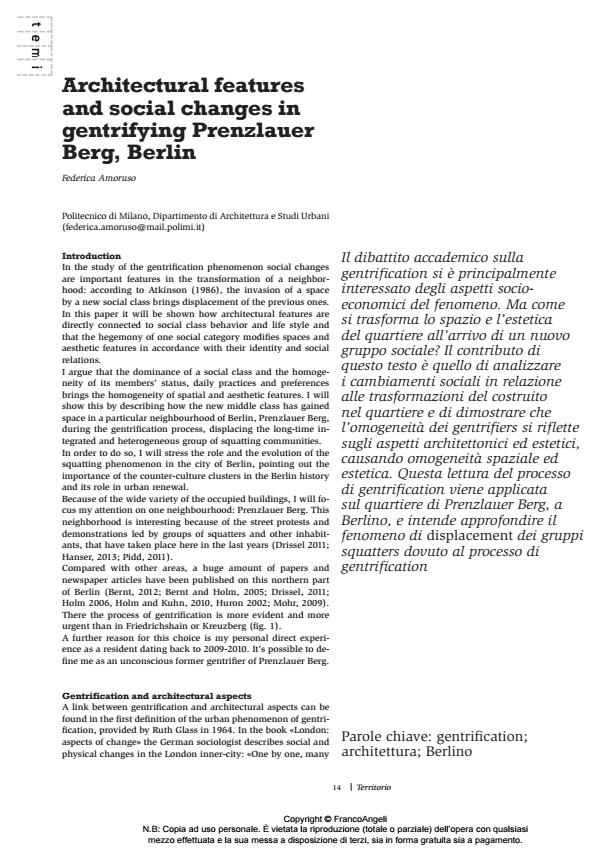Architectural features and social changes in gentrifying Prenzlauer Berg, Berlin
Journal title TERRITORIO
Author/s Federica Amoruso
Publishing Year 2015 Issue 2015/73
Language English Pages 9 P. 14-22 File size 276 KB
DOI 10.3280/TR2015-073003
DOI is like a bar code for intellectual property: to have more infomation
click here
Below, you can see the article first page
If you want to buy this article in PDF format, you can do it, following the instructions to buy download credits

FrancoAngeli is member of Publishers International Linking Association, Inc (PILA), a not-for-profit association which run the CrossRef service enabling links to and from online scholarly content.
Il dibattito accademico sulla gentrification si è principalmente interessato degli aspetti socioeconomici del fenomeno. Ma come si trasforma lo spazio e l’estetica del quartiere all’arrivo di un nuovo gruppo sociale? Il contributo di questo testo è quello di analizzare i cambiamenti sociali in relazione alle trasformazioni del costruito nel quartiere e di dimostrare che l’omogeneità dei gentrifiers si riflette sugli aspetti architettonici ed estetici, causando omogeneità spaziale ed estetica. Questa lettura del processo di gentrification viene applicata sul quartiere di Prenzlauer Berg, a Berlino, e intende approfondire il fenomeno di displacement dei gruppi squatters dovuto al processo di gentrification
Keywords: Gentrification; architettura; Berlino
Federica Amoruso, Architectural features and social changes in gentrifying Prenzlauer Berg, Berlin in "TERRITORIO" 73/2015, pp 14-22, DOI: 10.3280/TR2015-073003